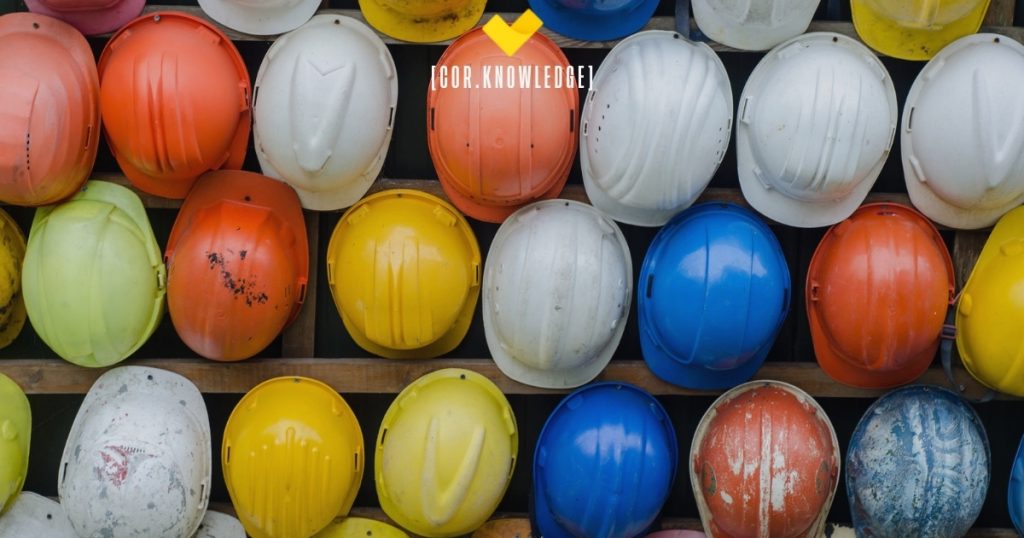A Global Look Over the Situation
Every industry has been touched by the COVID-19 pandemic, many in an overwhelmingly adversely way. Some are still struggling to recover in light of the substantial damage done all over the globe.
The construction industry, considered an essential service in many parts of the world, faced myriad consequences thanks to global shutdowns, numerous restrictions, and additional challenges. Among others, these challenges have included:
-
Difficulty Accessing Worksites
During quarantines, project managers, contractors, and construction workers have had trouble gaining access to the job sites — a critical job function. The shutdowns have led to delays or even cancelations.
-
Pressure to Complete Projects
With other issues mounting, including the lack of workers, the pressure to complete projects in a timely manner has come to a head. Often, it is impossible to finish projects according to pre-pandemic timelines, forcing construction firms to adjust.
-
Increased Costs
Costs, too, have skyrocketed thanks to import / export and shipping disruptions, as well as shortages of materials in many parts of the world. It may difficult to attain materials at all in some areas.
-
Project Shutdowns
Some worksites have shut down completely, halting or even canceling important construction projects.
What are the specific challenges the construction industry is facing during the ongoing Coronavirus crisis? How is it moving forward now — and what will a post-COVID landscape look like?
This is a picture of the current situation in light of the unprecedented crisis — as well as how the construction industry can weather the storm successfully.
Challenges of Construction During COVID-19
There is no doubt that the immense challenges during the pandemic are extraordinary. Some of the most critical difficulties of constructing during COVID-19 are:
Price Hikes
Construction input prices are up 23.1% year over year, according to Associated Builders and Contractors (ABC). Construction materials, including lumber, have seen fluctuating prices throughout the COVID-19 pandemic. The global demand for materials coupled with a strained economy are driving construction costs up and could continue to do so even in a post-COVID world.
This unprecedented expense has damaged the real estate economy, forcing companies to spend more while they are earning less.
Shortage of Skilled Labor
Even just before the pandemic, the construction industry faced skilled labor shortages. Now that construction activities have resumed, these shortages are persisting, with many previously laid-off workers refusing to return to job sites due to factors like occupational safety hazards and concerns, family demands, low wages, and more.
Backlog Decline
ABC’s Construction Backlog Indicator has fallen significantly, and ABC Chief Economist Anirban Basu predicts that the decline in work availability in the construction industry will continue well into the future. The causes of this issue include increases in remote work, meaning the need for office buildings and facilities is decreasing. Many employers are continuing remote policies into the future, possibly even post-pandemic, which suggests that construction projects, too, will continue to see a backlog decline.
Healthcare facility and nursing home construction may also see a decline, as people are becoming more reluctant to visit or bring loved ones to these sites in light of Coronavirus scares. Retail storefronts, too, are becoming less ubiquitous, as shoppers increasingly turn to online shopping as a safer alternative to physically going into stores.
Supply Chain Shortages
Material procurement challenges are another area of concern. Construction firms are experiencing problems attaining critical materials like lumber.
Lockdowns have made securing these goods a problem for companies. Shipping and delivery remain an issue, while air travel is still deemed unsafe by many. Construction companies can no longer rely on a single distributor to obtain their materials, and international providers are less of a possibility.
Action Plans
Fortunately, there are steps construction firms and managers can take to meet these challenges and persist through this new landscape. These ideas include:
Solid — Modified — Project Management
Construction firms must prioritize the client experience in spite of these challenges, and that starts with strong project management. Project managers need to work closely with clients, team members, and other stakeholders, developing proactive plans that help them weather the difficulties they are continuing to face during the pandemic.
The approach they used or may have used in the past will, however, need to modified to accommodate changing dynamics in the construction industry. Project managers must, for example, find ways to keep clients informed when they are unable to visit work sites in person. They should also involve contractors, subcontractors, and construction workers earlier on in the process, keeping them apprised of the plans and efforts.
Turning to Multiple, Local Distributors
The days of relying on a single distributor are gone, thanks to difficulty obtaining materials across the globe. For guaranteed procurement of these goods, construction companies need to turn to multiple providers to ensure that they are more able attain everything they need.
Additionally, because of difficulty securing materials from international providers in the past year and a half that the pandemic has persisted, many construction firms are looking to local distributors to minimize disruption to their pipeline. This will also help ensure that they encounter fewer delays in receiving the materials necessary.
Factoring in Longer Timelines
Given challenges like project interruptions, delays, and difficulty acquiring materials, construction companies will need to provide ample time for construction activities and project completion. Negotiations, work activities, collaboration, and other aspects of construction projects will require more time to complete, so it’s important to be realistic when it comes to the time commitment required.
Stronger Connections
Members of the construction team should build, maintain, and strengthen connections across the industry, using a variety of different approaches.
This, of course, applies to the internal team, where trust and a spirit of collaboration are paramount. Because of the Coronavirus pandemic, there is often less opportunity to be in the same room with every team member, so they will need to build and hone connections through virtual platforms and ensure comprehension and understanding.
It also applies to relationships with clients and stakeholders. Construction companies should work to get to know clients to facilitate better negotiations and project management in general.
In addition, they must build connections with providers, especially when they are developing new relationships for procurement of materials. Employ a flexible approach and understanding as you navigate new and changing working relationships with everyone involved in the project and process, recognizing that these are challenging times.
Communication and Collaboration
A huge part of creating and strengthening relationships across the construction industry comes down to positive communication and exemplary collaboration.
Increasingly, companies are turning to virtual systems and messaging platforms to facilitate communication, particularly as in-person meetings are seldom. In some cases, they may be communicating across different timezones, and digital platforms make this more possible and feasible.
Collaboration should not suffer, even when parties can’t necessarily be in the same room simultaneously. Working together productively requires developing a sense of unity, remembering that you’re in this together.
New Tactics
Of course, it’s impossible to list all the strategies and action plans construction companies, project managers, and other stakeholders should employ when tackling new construction projects during the COVID-19 crisis. What it really boils down to is providing the space for innovation, trying different strategies to ensure productivity and a thorough, practical workflow.
As they cope with the various challenges the pandemic and subsequent shutdowns have presented across industries, companies and key players will inevitably have to explore a variety of tactics, turning to alternative methods of performing work they may have done the same way for decades.
From new ways of planning to diverse approaches of conducting construction projects, innovation is an essential facet of the new normal. Examples of innovative approaches include:
- Changing work schedules account for the time involved and accommodate social distancing measures
- Providing ample safety measures, accounting for Coronavirus, in addition to traditional safety protocols
- Using increasingly digital methodologies to communicate and collaborate effectively
Conclusion
There is no doubt that the challenges and difficulties that have plagued the construction industry during the new normal have already done damage. But they need not be permanent, nor as damaging as they could be.
Construction companies do have the capacity to continue to complete new projects and improve the workflow, all while prioritizing their workers’ wellbeing. They can adapt quickly, pivoting to new ways of working and strategies for approaching construction management and projects themselves.
In fact, by employing these new approaches — strong project management, longer timelines, diverse communication and collaboration strategies, facilitating connection-building, and more — construction businesses can even find ways of making their organizations even better than they were previously.
It’s abundantly clear that across industries, changes caused by the pandemic are here to stay for the long haul. How businesses pivot and adjust to this new landscape will dictate their success. In construction, the turbulence has been considerable, the industry will persist if they take these measures and accept the challenges as they come.















